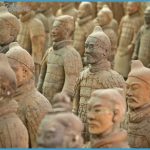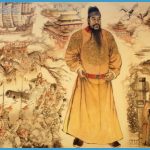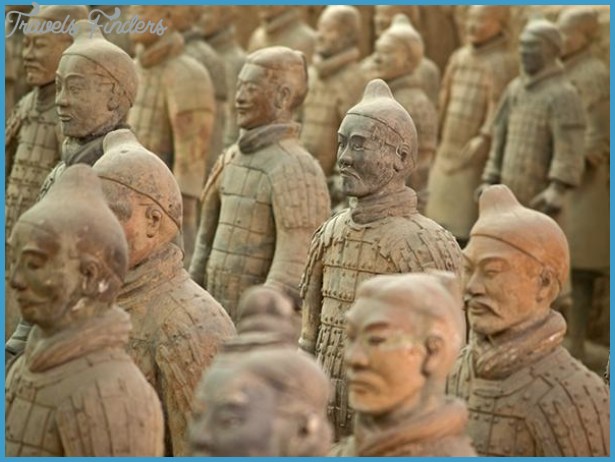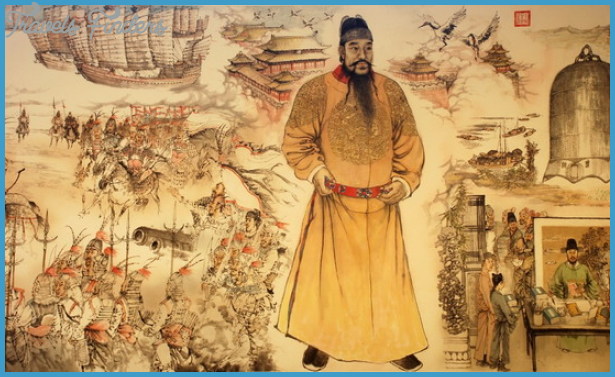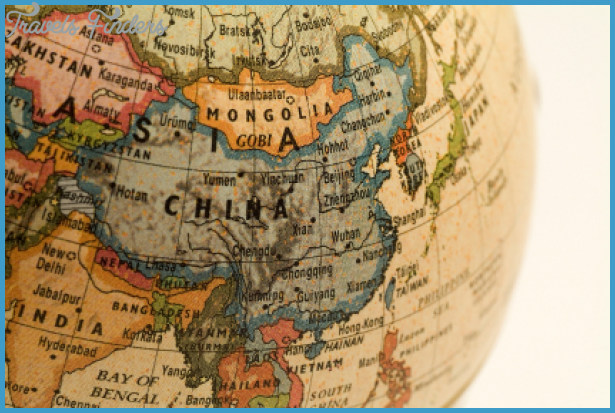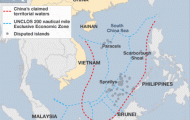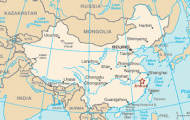Excavations have unearthed evidence of prehistoric settlement in China over a million years ago. Traces of settlements have been found throughout “Inner China” as well as in the north near Beijing and in the Changjiang and Huanghe river basins. Archaeologists have found firm evidence proving that some sort of organised society existed 500,000 years later. The human remains which were found in Beijing in 1921 prove that Peking man (sinanthropus pekinensis) had settled there 400,000 to 500,000 years earlier, had made his own tools to till the land and used fire.
It has been established that the first human societies, notably the Yangshao and Longshan civilisations, emerged at the beginning of the Neolithic Era about 6000-5000 years b.c. in the Huanghe basin near Xi’an and later expanded into the eastern and southern regions of China. The matriarchal Yangshao peoples formed themselves into small farming villages where they cultivated wheat and millet and bred pigs and cattle. Within the patriarchal Longshan civilisation some evidence of a class system has been found, but the most interesting finds are the examples of their pottery. As well as showing considerable skills in pottery manufacture and design, the Longshan settlements – villages with fortified walls – were relatively advanced.
The Xia, the first Chinese dynasty, established a system of inherited succession.
The later Shang Dynasty took China into the Bronze Age. Engravings on metal and bone have provided considerable information, demonstrating that the people of that era had mastered the skill of producing bronze – utensils, weapons and tools from the Shang years are still of unsurpassed quality – and that an organised society could be established with rigid structures, based on the exploitation of slaves. Although the Shang were hunters and warriors, they were also skilled farmers. They cultivated mainly millet and wheat and bred silkworms which supplied the thread for their clothing.
The Zhou Dynasty succeeded the Shang by developing more sophisticated methods of producing bronze and evolving a more advanced concept of society where slavery played no part. This society was organised around a patriarchal feudal system in which succession was based on inheritance by the first-born. The chief functioned as a feudal lord allocating land to princes on an hierarchical basis, while the rest of the community were subjected to a life of serfdom. Gradually a third layer of society emerged, the officials, who were of noble origins but possessed no estate. They earned their living as army officers or administrators in the services of the princes.
Under the Eastern Zhou Dynasty, during the Spring and Autumn periods (the Hegemonic Empires) and the time of the Warring Kingdoms, further developments in the economic and social structure emerged. Iron brought such progress to the agricultural economy, trade and manual crafts (foundries, saltworks and workshops for the production of pottery and lacquer) that coins were introduced as a means of payment. Nevertheless, the dynasty had a number of problems to contend with: the sheer size of the empire, different racial groups and attacks from rivals. The Spring and Autumn periods and Warring Kingdoms period were times of transition marked not just by conflict and upheaval, but also by one of the most productive phases in

